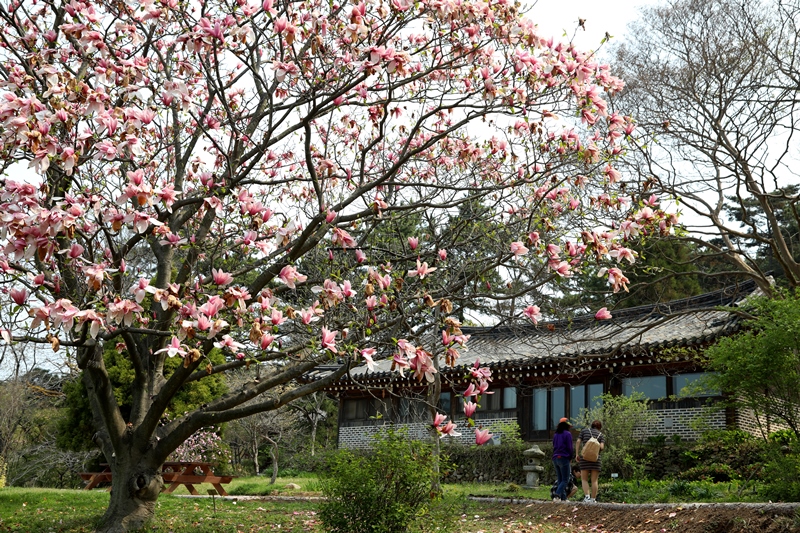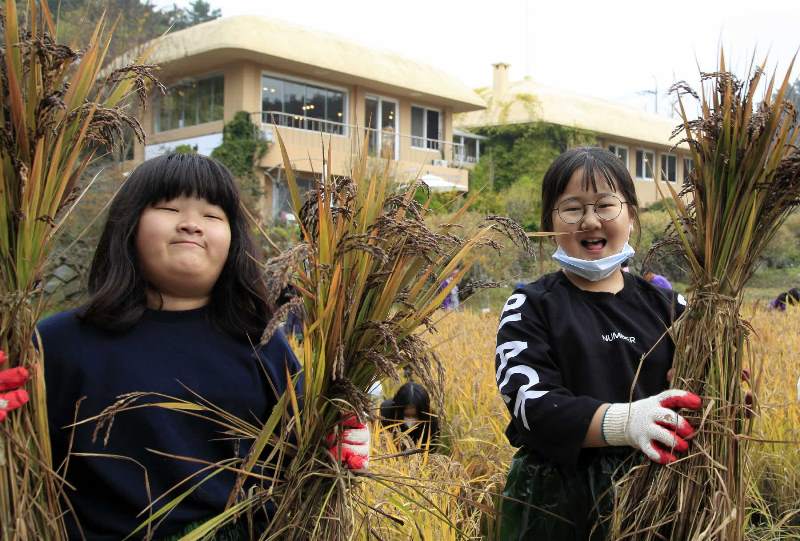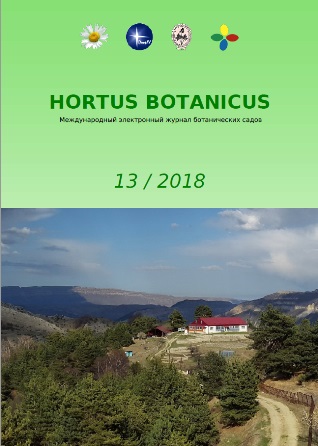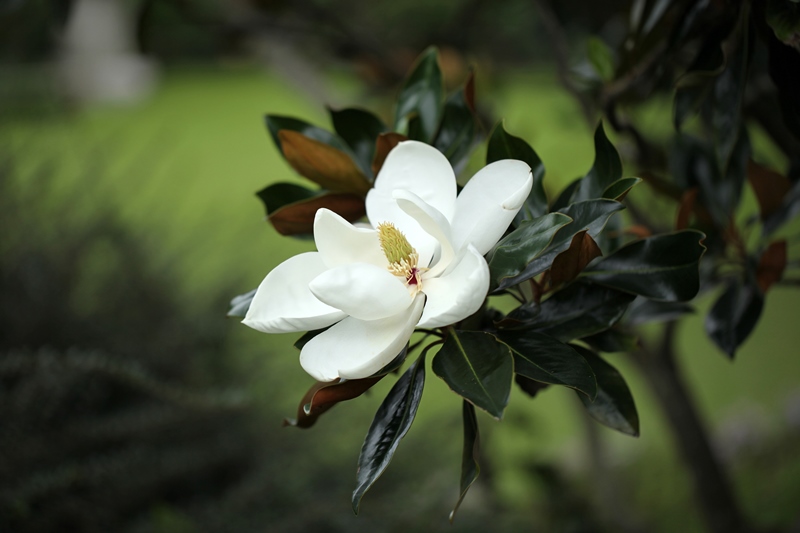INTRODUCTION
The Chollipo Arboretum Foundation was founded by the enthusiastic plant lover, late Dr Pyong-gal MIN (Carl Ferris Miller) who was the first American naturalized to Korea in 1979. Dr MIN has spent much effort to create a home for plants from the temperate zone of the world along with Korean native woody species.
Dr MIN was born in West Pittoston, Pennsylvania, USA on December 24, 1921. He arrived in Korea in 1945 as a US Navy officer with the first units of the US military government to take over the Korean Government from the Japanese. After he completed his naval service in September 1946, he returned to Korea in February 1947 as a civilian assigned to the Claims Bureau, Ministry of Justice, US Military Government in Korea. For thirty years from 1952, he worked for the Bank of Korea, first as an assistant to the UN advisor of the Bank and later as a regular employee in which position he serve until retirement in March, 1982. Serving over 30 years in financial circles he became well versed in Korean economy and financial operation contributing much to the national development. His spontaneous love for Korea drove him to change his citizenship to Korean in 1979 and his name to Dr Pyong-gal MIN.
The arboretum was a new venture for Dr MIN, who majored in chemistry and worked for financial institutions. His budding interest in plants was cultivated while wandering in the mountains of Korea. Late Dr Tchangbok LEE of Seoul National University and the late Mr Muyon CHO of the Korea Forest Research Institute were also of great support to him. Dr MIN’s thirst for knowledge combined with his deepening love of natural world. Eventually Chollipo Arboretum became the full blown expression of that combination.
The first land, 1.5 hectares, was purchased in 1962, but it was not until 1970 that actual work begun, with the reassembly of three Korean traditional style buildings which had been transported to Chollipo from Seoul. It was the first attempt to establish a comprehensive private arboretum in Korea. By the summer of 1978, the Arboretum consisted of 58 hectares.
The Chollipo Arboretum is recognized worldwide as a valued and longstanding peer of numerous botanic gardens and arboreta of the world for professional information exchange regarding plant sciences, public garden practices and for the Index Seminum.
The Chollipo Arboretum has a unique collection of various plants with the main interest in woody plants from USDA zones of 4 to 8. The Chollipo Arboretum focused 5 genera for intensive collection at global levels; Genus Ilex, Camellia, Magnolia, Acer and Hibiscus.
LOCATION, SOIL AND CLIMATE
The Chollipo Arboretum is at 36˚46´ north latitude and 126˚08´ east longitude, with elevations ranging from sea level to 129 metres. Chollipo which is 156 kilometres or less than 2 hours southwest of Seoul is the name of village where the Chollipo Arboretum is located. Chollipo itself is a fishing and farming village with a small population, most of whom live on the seaward side of the hills in the area. Being the very tip of the Taean Peninsula the Arboretum has the benign climate accorded to such locations of the land itself. The area around the main buildings, including the first land acquired, are on a cliff facing an island and the Yellow Sea. The tides in the area are some of the highest in the world, with a maximum spread of over 10 metres. At low tides the island become a peninsula.
The soil varies from pure sand through decomposed granite and hard clay to good loam, the last in fairly limited supply, while poor drainage presents a problem in several areas. Much progress, however, is being made in improving the soil and drainage. Good quality peat was found abundantly in one area in the course of digging a pond for water storage, since there are no natural all-weather watercourses or bodies of water on the property. Natural regeneration is also doing its work parallel with soil erosion prevention work and good composting practices. In the forested areas natural debris is once again permitted to lie where it falls-not the usual practice of such material being traditionally gathered for fuelwood.
Since the Chollipo climate is moderated by its location beside the sea areas only a few kilometers inland from the Arboretum have considerably hasher climates-most plants listed as hardy in Zone 8 according to the USDA hardiness scale survive the cold and in favourable pockets some plants rated as Zone 9 thrive, even surviving the winter of 1976-77, which was the worst in the memory of any of the villagers. Conversely, the winters are of sufficient duration and severity for colder climate trees and shrubs also to do well, the birches being a good example. Meteorological records for the Arboretum area itself, simple though they are, have been kept only since 1974. Rainfall comes very unevenly as it does throughout Korea where 67.8 percent of the annual rainfall comes between late June and early August. The annual average will probably prove to be in the neighbourhood of 1,236m(48.6 inches). The draught comes regularly during the year, and this year recorded no rains over forty days during spring time.
Normally the temperature in winter does not fall below -10˚ although during the very cold 1976-77 winter a low of -14.5˚ was recorded on 26 December 1976. Data is collected at one of the coldest spots in the Arboretum, some favorable locations being a full 2-3˚ warmer throughout the winter. Temperatures in excess of 30˚, however, do normally occur on at least a few days in July and August. The, long, sunny, comparatively dry autumn insures the sufficient hardening of plants before winter sets in. Although Chollipo’s climate is generally salubrious it does suffer from strong winter winds and considerable salt spray, which means that protective shelter belts have already well naturally regenerated by Pinus thunbergii.

Vulturer's view of the Main Garden
AREAS
Chollipo Arboretum consists of 58 hectares, ranging from forested mountains and an island of 5 hectares to cultivated farm fields, rice paddies and sand dunes. The seven major land areas that make up the site are unfortunately not contiguous but they are all very near each other. These areas provide various habitats for a wide range of plants.
Main Area: This is the main part where the arboretum originally started and it contains good mixture of plant species and cultivars of both woody and herbaceous plants. There are 11 buildings including seven traditional Korean style houses. There are two ponds once rice paddies, which serve an important function as water reservoir as well as create excellent habitat for waterside plants. The seashore adjacent to the Main Area provides wonderful scenery with art gallery, Dr Miller’s Memorial Room and coffee shop.
Eco-healing Center: This area is right in the middle of the village near the small port. The soil here is basically pure sea sand and is making an interesting habitat for sand dune plants, such as Viburnum bitchuense, Rosa rugosa, Vitex rotundifolia, Lathyrus japonica, etc. After an intensive soil improvements, the biggest collection of Rose of Sharon (Hisbiscus syriacus) in Korea, the national flower of Korea is in the Garden of the Eco-healing Center. This Garden is widely used as educating peoples for the beauty of flowers. The office for garden staffs are located here.
Blue Rock Thrush Island: There is an island right across the sea approximately 500 meter away from the Main Area. At low tides the island becomes a peninsula. The island, named Nangsaesom or Blue Rock Thrush Island, is being introduced exclusively in native plants, mostly the broad-leaved evergreens which is thought to have originally cover the many offshore islands in the Yellow Sea. The present dominant species is Pinus thunbergii. These are being replaced with Machilus thunbergii, Machilus japonica, Neolitsea sericea, Neolitsia aciculata, Quercus mysirinaefolia, Ilex integra, Ilex rotunda, Ilex x wandoendis, Ilex cornuta, Distylium racemosum, Actinodaphne lancifolia, Camellia japonica, Pittosporum tobira, and Raphiolepis umbellata, etc. This Island will be a site for ecological restoration for broad-leaved evergreen species for education purposes.
Conifer Area: Located a short distance away from the sea, it has a splendid view looking down toward the beach and the island. This is an area with a good collection of conifers mainly above the hill and a good collection of Corylopsis species below. Other conifers such as Thujopsis dolabrata, and Cryptomeria japonica etc., are well established since the mid of 1970s. Dwarf conifer species will be intensively displayed in this area.
Magnolia Hill: A wonderful collection of Magnolias together with Lagerstroemia and Prunus are thriving with Pinus thunbergii, Pinus densiflora and Rhododendron mucronulatum in this area, where one of the highest landscape in the Arboretum. They are establishing rapidly helped by good rich soil and less competition with natural vegetation. It is a spectacular site for magnolias and also the good variation in colour of Rhododendron mucronulatum is nothworthy. In spring, many wild flowers such as Hepatica aisatica, Iris rosii, Corydalis ambigua are elsewhere in abundant patches. The path for the disabled person is well managed over 4 km long penetrated into the forest.

Pond in the main garden
COLLECTION
Between 1974 and 1977, a large number of trees and shrubs were acquired from well-known nurseries mostly in America and England. It was in 1976 when the first collection of a good number of plants and seeds were collected from the wild by Dr Pyong-gal MIN on trips around the southwest part of Korea including Mt Naejang and the islands of Wando, Judo and Jeju.
The collection of Korean natives enhanced every year ever after. These trips inspired the index seminum and the first edition was compiled in early 1978 and has been published annually ever since. In 1996, 234 kinds of seeds were sent to 140 individuals and botanic gardens in 36 countries. We now exchange seeds with 252 botanical institutions in 36 countries. Through the exchange of seeds with a growing number of horticultural organizations in many countries, many plants from various wild habitats were added to the collection. Since the beginning of the Arboretum, the number of new acquisition was especially large between 1978 and 1981.
Genus Magnolia at Chollipo Arboretum is one of the most intensive collections in the world. In1972, two plants each of Magnolia sieboldii and M. kobus were introduced from a nursery called Mansuwon in Daejeon. These were the first acquisitions of magnolias followed by six others; M. grandiflora, M. hypoleuca, M. denudate, M. stellate, M. kobus and M. liliiflora which was available in Korea. The first purchases from overseas were M. x loebneri and M. stellata ‘Waterlily’ brought from Tingles Nursery in Maryland in the spring of 1973. A year after 33 species and cultivars were acquired from Gossler Nursery in Oregon, USA and an assortment of magnolias from Treseder’s Nursery in Cornwall, UK. Eight hundred Magnoliaceae entities are now in the collection which is composed of I genus, 75 species, 3 subspecies, 12 varieties, 627 cultivars and 83 hybrids.
One of the most important contributions of Late MIN is his naming and documentation of Ilex x wandoensis on Wando. It was first sent to USNA Arboretum and now is widely distributed in the nursery trade. It is assumed to be a natural hybrid of Ilex integra and Ilex cornuta, both found in the wild in close proximity on Wando. This hybrid is widely known in ornamental horticulture in the western countries. Dr MIN also introduced Ilex poneantha and Ilex dimorphophylla from wild collections on Amami Oshima, Japan into the world of ornamental industry.

Acer palmatum 'Sango-kaku'
Acer palmatum 'Shin Deshojo'

Camellia japonica 'Berenice Boddy'

Camellia x vernalis 'Star above Star'

Hibiscus syriacus 'Andong'

Hibiscus syriacus 'Kangwon'

Ilex x wandoensis


Magnolia flowering

Magnolia 'Ultimate Yellow'
Magnolia grandiflora 'Littel Gem'

Magnolia x 'Star Wars'
EDUCATION
The education at the Chollipo Arboretum is one of the key missions since the beginning of the Arboretum. The four programs such as Gardeners Training Course which started officially on 2002 for 10 persons a year for 11 months. This program which is now enrolled 30 trainees for 10 months-long is aimed to educate gardeners in a practical aspects including apprentice system for garden management and supported by the Korea Forest Service as No 1 Certification and 230 trainees finished course until 2015. The Chollipo Arboretum is expecting to open master course on botanic garden management linking with other botanic gardens outside of Korea as we need the more trained staffs at the botanic garden. The botanic art in Korea is in increasing demand. Since 2012 the Chollipo Arboretum runs the Botanical Art Course and 40 participants completed the Course until 2015. The Duty Training Program for Teachers on Forest Ecology Education began in 2006 targeting to educate the teachers focused field practice to learn the importance of ecological process in the forests. The 140 teachers completed the course as of 2015. The Forest Experience Healing Camp which started from 2013 is one the popular programs to adults offered by the Chollipo Arboretum. Approximately 4,000 peoples have participated as of 2015. A small library is now on the processing to extend capacity for over 50,000 volumes on ornamental horticulture, botanic garden management and conservation.
CONSERVATION
The botanical gardens and arboreta are the core facilities to conserve and educate peoples the threatened plants and their habitats. Chollipo Arboretum, one of the official is one of the ex situ plant conservation facilities designated by the Ministry of Environment of Korea. The main target to conserve are Abeliophyllum disticum (Oleaceae), Euryale ferox (Nymphaeaceae), Ranunculus kazusensis (Ranunculaceae), Iris dichotoma and I. koreana (Iridaceae). In alliance with the Global Strategy for Plant Conservation, we are focusing in situ conservation with documentation of the target species in the wild and translocation for educating peoples, especially primary students.
The Chollipo Arboretum in collaboration with the Korea National Park Authority initiated conservation project to recovering threatened plant Iris dichotoma in Ong-do Islet located 12 km off the west coast of the Korean Peninsula. The size of the Island is about 170 thousand square meters. The main vegetation are Pinus thunbergii, Machilus thunbergii and Camellia japonica. Only 47 individuals were recorded with five clusters in the wild. The staff is stationed for the light house in the Island, only a groups of piscators who are regularly visited has been severely threatened the island habitats of Iris dichotoma as the main habitats are in line with the forest path in the island. The flora was documented by the Arboretum staff since 2013 and 63 families, 140 genus, 161 species, 18 varieties and 2 forms were documented as of 2018. The monitoring by the Korea National Park Authority recorded the individual numbers of Iris dichotoma in the Islet were dramatically decreased as 30 percent for the last three years. The Chollipo Arboretum prepared single species recovery plan collaborated with the Korea National Park Authority targeting recover the threatened habitats and educating peoples in the local community.
The herbarium targeting for major five genera such as Ilex, Magnolia, Acer, Camellia and Hisbicus including herbarium specimens collecting in the west coast areas and islands off the west coast will be documented.
OUTREACH BEYOND THE ARBORETUM

Day of Friends of the Arboretum

Rice harvesting in the Arboretum

Rice harvesters in the Arboretum
The Chollipo Arboretum has been try to linking with the community. The first attempt was dated back to early 1970s as the Arboretum donated trees and shrubs to the local primary and middle schools to enlighten the importance of trees to human welfare. This efforts stretches out to beautify the village beautification by planting a roadside trees. Rice cultivation at the Arboretum is also the main connection linking plant and next generations. Rice planting was executed with primary students in local school and harvested together to enlighten the importance of plant diversity.







